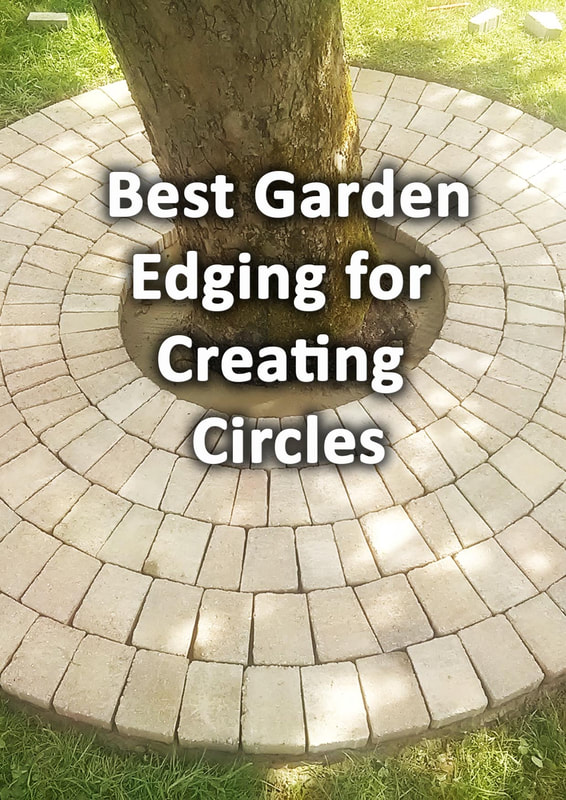|
This article contains affiliate links
When it comes to landscaping your garden the most interesting designs are a break from the norm. The great majority of gardens are always laid out the same way!
Straight flower borders, square patios and rectangular lawns. Implementing curves and organic shapes can really spice up a garden’s aesthetic qualities. Curves can soften hard lines and bring much more visual diversity to an outside space.
As landscape edging defines the primary structure of a garden one must explore the best edging materials for creating curves.
There are many flimsy, plastic, garden edging products on the market today. In this article I will not include these products as they are bad for the environment and generally bad value. Installing such flimsy edgings will lead to failure and extra waste. Therefore, in this article, I will list the 5 best garden edgings for curves that will last the test of time. Granite sets
Granite setts are robust cubes of natural stone which are extremely hardwearing. These also look very effective as a garden edging and border to hard surfaces. The standard size of square setts is about 100mm x 100mm. The small unit size makes them perfect for creating organic shapes and curves. Setts need to be bedded down onto a strong mortar on top of a compacted sub-base. Why not read our article which explains how much it costs to install curved granite sett edgings. Bricks
Bricks are a fantastic material for creating curves within the garden. Like setts, their multiple, units can be laid to gradually form curved edging and retaining features. Bricks are an extremely hard wearing material with colours that do not fade over time. Like setts these will need a solid sub-base or even a concrete foundation to lay as edging. This can be costly and labour intensive but will last for many decades. Why not visit our article which explains how much it costs to install curved brick edging. Block paving
Like bricks, block paving are another great option for creating curved edging. These can be bedded down onto a well compacted sub-base layer on a strong mortar mix. The best block paving for forming curves is the three sizes variety as shown in the image below. These have a 'cobble effect' aesthetic and seeing they come in grey tones their colours fade less than pinks, brindles, charcoals and buffs. However, to make perfect curves with these you will have to cut angles to the blocks as shown below. Gravel boards
Timber gravel boards are a great way to create curved garden edging. This is especially so if you want thin edging which is not that noticeable. To make the boards more flexible you can make a series of vertical cuts along their length. These boards are traditionally used to separate fence panels from the ground level. Although they are treated with preservatives these will still degrade after around 15 years. Flexible metal edging
If you want curved edging with a contemporary feel, flexible, metal edging could be a good choice. The great thing about this edging is it is almost invisible between two surfaces. This can make two materials look like there is no junction between them at all. Although metal edging is good for cures it does not have much retaining strength. Consequently for extra strength you may wish to encase its prongs within a concrete foundation. One of the best metal edgings on the market today is Core-edge.
Thank you for reading our article on the best garden edges for curves. If you require curved garden edging installation please do not hesitate to contact us.
Our installers are experts in garden edging installation using all the materials and products mentioned. Below I will link to some more articles you may find relevant.
'As an Amazon associate I earn from qualifying purchases'
0 Comments
Leave a Reply. |
The Author
|
Landscaping services across Buckinghamshire, Amersham, Aylesbury & High Wycombe
Hyde Heath, Amersham, Buckinghamshire |
|

















